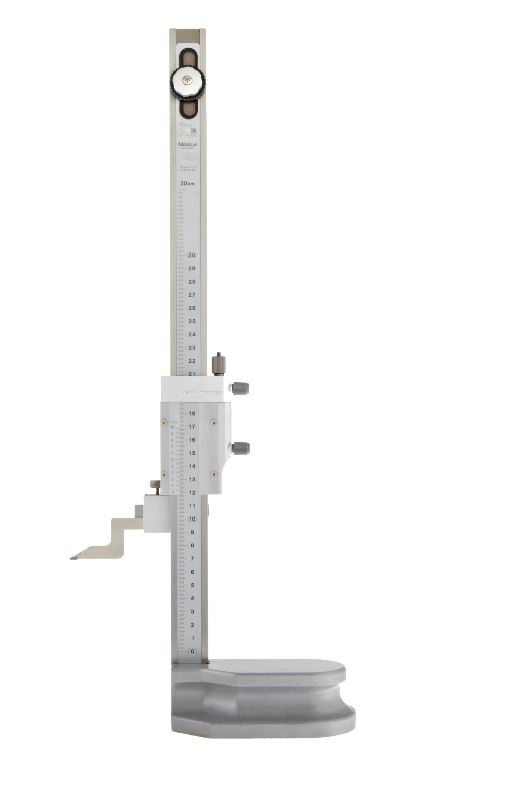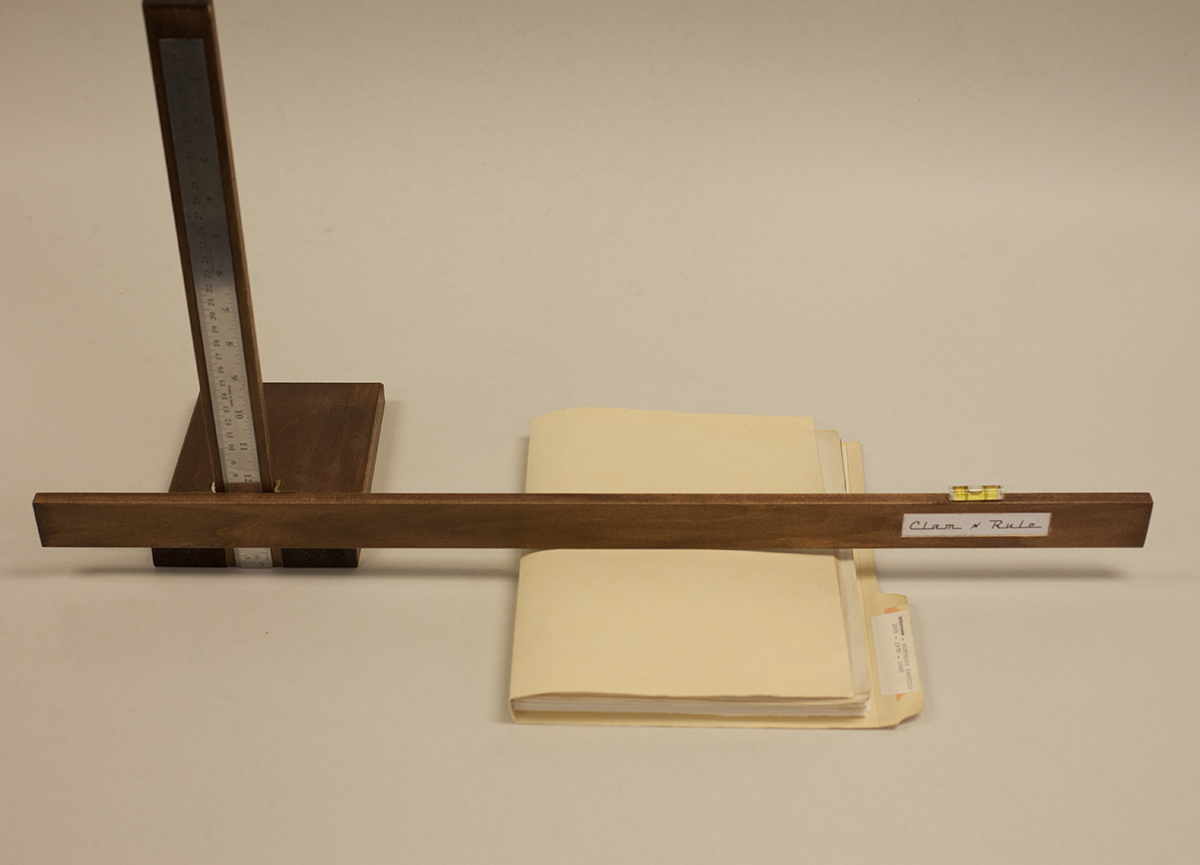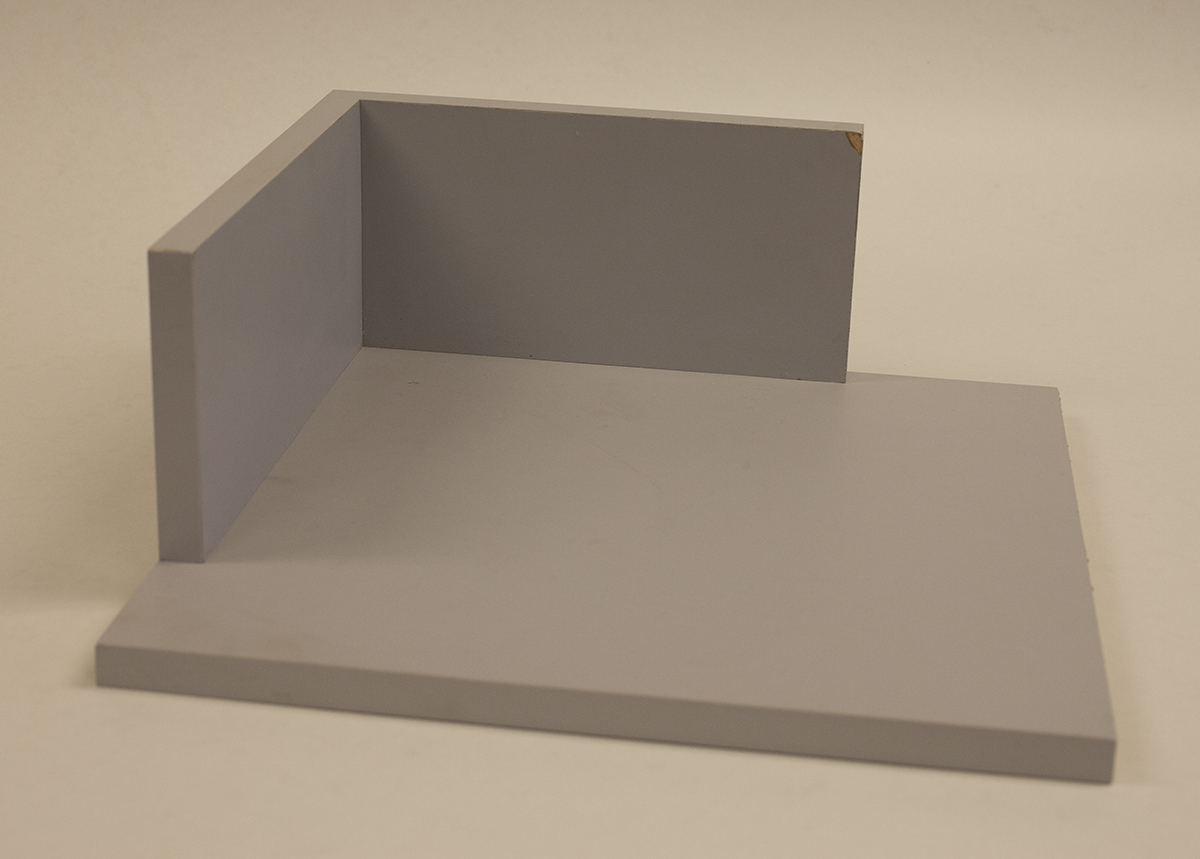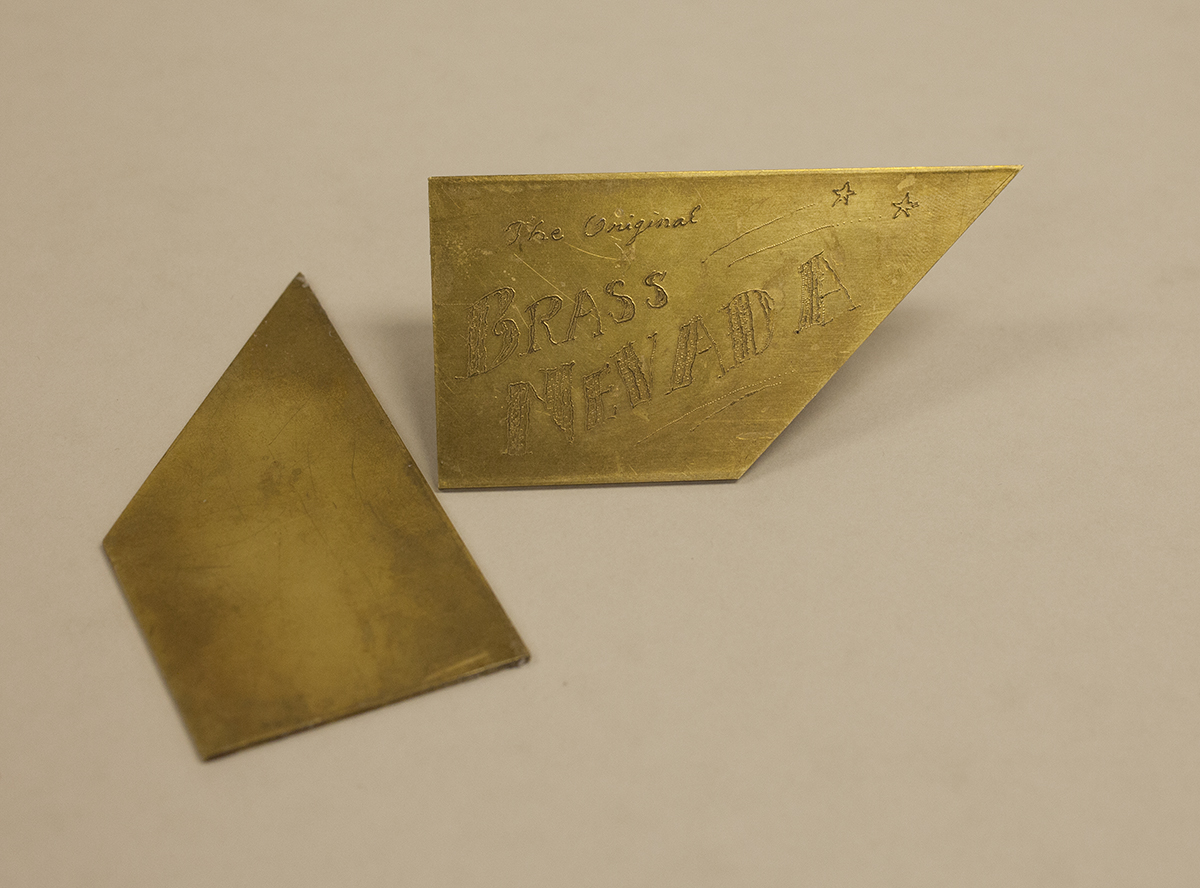As Necessity is the Mother of Invention, I thought I’d share with the wider preservation world some tools and tips we’ve developed in the lab to solve some very specific problems. Undoubtedly other labs have their own solutions to similar problems; I know I’ve travelled with a few from place to place. *Anyone out there know of the NEDCC paper towel roll method to absorb excess water from a lining?
First off is the Clam-Rule. This tool developed from the need to measure a stack of manuscript materials in order to construct a clamshell box for storage. Numerous papers of varying sizes are all but impossible to fit into a 
I developed this decidedly lower-tech version, using a shop ruler, some wood, woodstain, brass and a bubble level. Once the horizontal arm is placed level on the stack, the height is read across the top edge of the bar, where it meets the millimeter gradations.
Along similar lines of box making is this simple jig- utilized when creating build-ups for the interior of clamshells. We make ours out of cloth-covered corrugated board. Multiple layers of board are laminated together; it helps greatly if two sides of this laminated stack are jogged up, ensuring less cutting in the end, and a neater product. Our jig is made out of scrap MDF counter-top, screwed together.

For gluing items and keeping tabletops clean, many labs use scrap paper under constructions while they dry. The trouble is, the paper ends up sticking and can only be used once. Much better are scrap sheets of polyester film (generated from encapsulation trimmings or errors). PVA peels readily off plastic film, so the sheets can be used again and again. An alternative to both of these solutions is waxed paper. We get ours from ULINE. It’s relatively inexpensive, can be used repeatedly, and my colleagues in the book unit tell me it is a much better product than conventional white butcher paper or translucent waxed paper. We’ve found another use for it too, in interleaving rolls of archival double-sided tape. Over time, the adhesive can creep a little, sticking rolls to each other if you have them stacked up. Dust also gets adhered. The interleaving solves both problems.

Finally, and perhaps most used, is the Brass Nevada. Though not invented by us, the moniker was apparently one Garry Harrison gave to it. It is indispensable in trimming cloth to fit interior corners of box constructions. The Nevada allows for 45 and 90 degree angles, provides an edge to cut against and has a much more satisfying weight during use compared to plastic, or card.

What sorts of tools and methods have been developed in your lab that may be unique to your institution?
–Doug Sanders
Leave a Reply